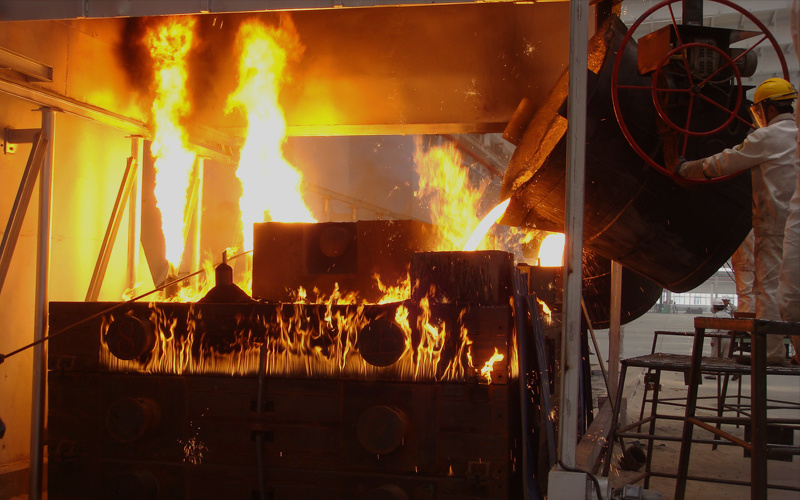Green foundry is the development trend of foundry industry in the future. In the production of steel castings, sodium silicate self-hardening sand, furan resin self-hardening sand and alkali phenolic resin self-hardening sand are widely used for moulding and core making. With the discovery and application of ceramic foundry sand and the improvement and maturity of old sand reclamation technology, alkali phenolic resin self-hardening sand gradually shows the advantages of mass production of high-quality steel castings, and becomes the choice of molding technology for newly built and rebuilt steel casting plants.

Alkali phenolic resin sand has the following advantages: first, in the process of pouring and cooling, it does not produce nitrogen, phosphorus, sulfur and other elements that can enter the liquid steel and affect its quality, so it basically has no furan resin casting surface sulfuration and acicular blowhole defects. Second, Few toxic and irritating odors are released in the process of sand mixing, molding, core making, pouring and sand removal, which basically has no impact on the working environment.Third, alkaline phenolic resin is strongly alkaline, the acid consumption of sand requirements are not high, can be used in alkaline sand, such as in large steel castings using a large number of chromite sand and so on.
The basic phenolic resin sand has the following main problems: the strength of the basic phenolic resin is relatively low, the amount of resin in the molding sand is high, which leads to high production costs. The old sand reclamation rate of alkaline phenolic resin can only reach about 70-80%, which increases the amount of new sand, the discharge of old sand, the cost and pollutes the environment. The shelf life of alkali phenolic resin is relatively short, usually within 6 months.
1. The ceramic foundry sand is spherical with smooth surface, under the same strength requirements, it can reduce resin consumption by 30-40%, and greatly reduce gas generation of mold/core sand;
2. Ceramic foundry sand has high refractoriness, and is neutral, applicable to various casting alloys, including stainless steel, manganese steel, chromium steel casting;
3. Ceramic foundry sand has good fluidity and is easy to be fill, and sand cores with complex shape and small local section area can be produced;
4, Ceramic foundry sand has high strength, low broken rate, high durability and regeneration recovery rate, and the regeneration recovery rate is as high as 98%;
5. Low expansion coefficient of sapphire bead sand reduces casting defects such as veining caused by sand (expansion);
Luoyang Ruiyu has been well-known for specializing in the production of foundry materials. In the past decades, our company focuses on the research, development and production of artificial foundry sand. With more than 10 years effort, Luoyang Ruiyu developed fused ceramic sand, which overcomes the shortcomings of traditional foundry sand. Ceramic sand has good shape, high refractoriness, and perfect stability under high temperature. It is a great cost-effective alternative for chromite sand and zircon sand and has been recognized by foundry experts home and abroad. Currently, Luoyang Ruiyu can produce 30000 tons of ceramic foundry sand with complete specifications every year.








